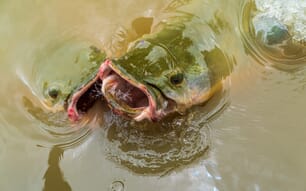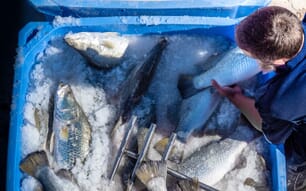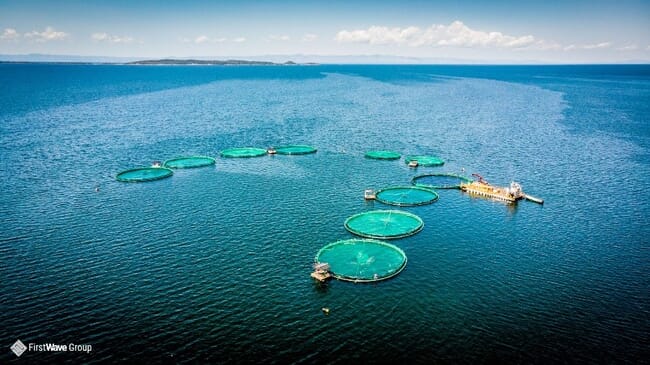
Triploid fish can be considered functionally sterile as they produce few, if any, viable eggs or sperm © Yaleo
Many of us see or hear the word “triploid” from time to time, but most aquaculturists are not entirely familiar with what the term actually signifies.
From a practical standpoint, triploid fish can be considered functionally sterile because they carry three sets of chromosomes in every cell, rather than the two sets found in normal (diploid) organisms. As a result, they produce few, if any, viable eggs or sperm.
There are two main reasons for pursuing sterility. The first is simply the pursuit of more efficient conversion of feed into harvestable product, while the second relates to the elimination of negative ecological impacts arising from accidental escapes. The latter includes both interbreeding with naturally occurring populations and the establishment of non-native species.
One recent example of the use of triploid fish involves Cooke Aquaculture Pacific. For several years the company sought – and recently obtained – permission from the state of Washington (USA) to farm steelhead trout in marine net-pen facilities that were previously used for Atlantic salmon production. This initiative began after the state legislature enacted a ban on farming any non-native fish in 2018. It might seem ironic that a species incapable of reproduction with native salmonids has now been replaced by domesticated stocks of a native species already under threat. However, a key element of the permitting approval related to Cooke’s pledge to only stock triploids, based on their extremely high levels of sterility.
Many other examples of the productive use of triploidy in modern aquaculture can be found. AquaBounty, the company that produces genetically enhanced AquAdvantage salmon, routinely incorporates triploidy as a means to ensure these fish will have little – if any – chance of reproducing, should they escape from a production facility.
In many states in the US, any grass carp being farmed or stocked – they are widely used as an environmentally friendly vegetation control method in private impoundments – must be sterile triploids, despite the fact that this non-native species has already become established in a number of large river systems throughout the country. And, oyster production in many parts of the world increasingly incorporates the use of triploid spat to improve growth rates and seasonal loss of quality related to gamete development – triploid oysters don’t turn a milky consistency in the summer months.
Alternatives to triploids
While some applications of triploidy in aquaculture have emerged only recently, interest in producing sterile stocks has been expressed for decades by many producers and researchers. Apart from triploidy, a number of emerging technologies may hold the key to eventually producing sterile stocks on a commercial scale, but the key word here is "may". These strategies include gene "knock out", ablation of primordial germ cells, and gene silencing. Unfortunately, any approach that can be interpreted as genetic engineering (fairly or not) will face significant policy and consumer perception hurdles if it is to eventually be commercialised.
And so, for the time being, triploidy remains the most commercially viable approach to produce sterile fish or molluscs in large numbers. So how does the whole triploidy thing work?
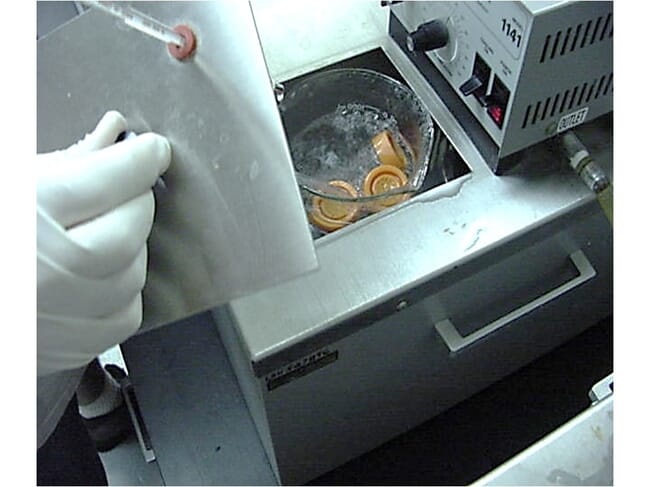
Triploids were first produced by fertilising eggs under controlled conditions and applying a temperature shock at a specific time
How to produce triploids
The key to the original process of triploidy induction involves what is referred to as the second polar body, an excess (and expendable) set of chromosomes present in the egg prior to fertilisation. Once a sperm cell enters the egg, internal mechanisms are triggered to expel the second polar body prior to the fusion of chromosomes from the sperm and the egg nucleus. In many aquatic species, triploids were first produced by fertilising eggs under controlled conditions and applying a shock at just the right time to interfere with the expulsion of the second polar body, resulting in an organism with three chromosome sets.
Unfortunately, it became apparent that, in many species, the shocks utilised on newly fertilised eggs could result in reduced viability of the resulting fry. However, an alternative strategy for producing triploids soon emerged, also based on applying temperature or pressure shocks to newly fertilised eggs, but a bit later after fertilisation. These shocks were timed to interrupt the first cell division of a developing embryo, resulting in a tetraploid animal with four sets of chromosomes. In some cases, these organisms can be raised to maturity and mated successfully with normal (diploid) individuals to generate all-triploid offspring, referred to as interploid triploids.
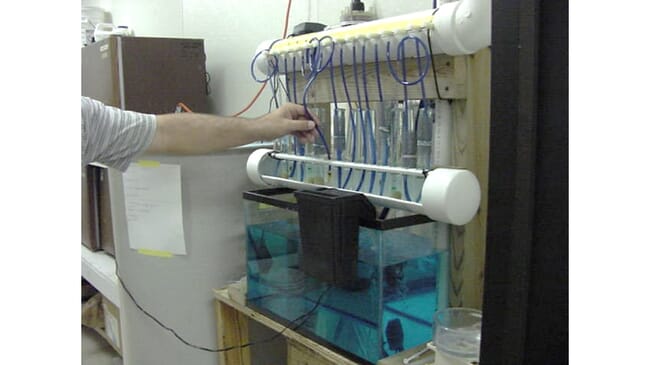
An alternative strategy for producing triploids soon emerged, also based on applying temperature or pressure shocks to newly fertilised eggs, but a bit later after fertilisation
This approach avoids the practical limitations of shocking individual batches of eggs and allows for the production of triploid offspring in far greater numbers. While tetraploids themselves often tend to underperform compared to diploids, their interploid offspring generally exhibit few or no physiological problems. Many species lend themselves to the interploid strategy, but it has proven problematic (or virtually impossible) in some cases, because viable tetraploid breeding stock is required.
Let’s consider the application of interploid triploidy in some of the major aquaculture species groups. Carps remain the most important group of cultured fishes around the world, but the interploid approach to triploid production has not been widely adopted by carp culturists. Tetraploid bighead carp and grass carp were produced in Florida in the late 1980s, but the fry exhibited low, or no, survival. Researchers in India reported on the successful induction of tetraploids in the Indian major carps rohu and catla around the same time, apparently producing viable fry. Early efforts to produce tetraploid common carp had some success, but once again the resulting tetraploids died in their early life stages.

This approach avoids the practical limitations of shocking individual batches of eggs and allows for the production of triploid offspring in far greater numbers
Some interesting and unexpected ploidy levels can result when certain carp species are hybridised. One line developed from a cross between red crucian carp and common carp has been shown to be all tetraploid, producing interploid triploids when crossed with either of the original parental species. Researchers in China have utilised this approach, in combination with other strategies, to achieve mass production of all-female interploid triploids.
While catfish have become the second most cultured group of fishes, the interploid triploid strategy has not been utilised to any great extent for these species either. Tetraploid Clarias batrachus were produced using cold shock at Kasetsart University in Thailand in 1988, and tetraploid C. gariepinus were produced in Hungary a decade later. Some early trials with channel catfish in the mid-1980s demonstrated useful protocols to produce tetraploids, but the industry never really followed up on this finding. Further work two decades later used different shock treatments, but success was still limited.
In channel catfish, harvestable size is attained prior to the onset of maturity, so sterility is not an important issue in terms of feed conversion or product quality. Additionally, concern over escapees is pretty much non-existent anywhere the species is currently cultured. This is also the case for many other species of catfish.
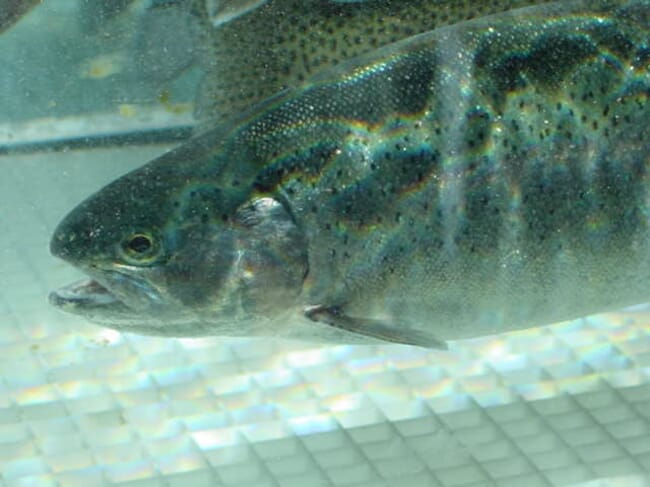
Shock-induced triploids are still the commercial approach for salmonid producers, raising animal welfare concerns
Much of the early research involving interploid triploids in aquaculture was focused on salmonids. Although many studies have been published on the use of interploid strategies in trout and salmon, shock-induced triploids are still the commercial approach for Atlantic salmon farmers. As a result, animal welfare concerns relating to the use of triploid salmon have been raised in several countries. Triploid salmon have been shown to suffer from elevated levels of skeletal deformities and cataracts, although diet and management can offset these problems to some extent. Some studies, however, have shown them to display disease resistance equal to that of their diploid counterparts.
Cultured molluscs and crustaceans offer huge potential for the adoption of commercial-scale interploid triploid culture, but the situation varies significantly between these major invertebrate categories. Although the mechanisms for producing tetraploid molluscs are much more complicated than those developed for fishes, the production of interploid seed is expanding rapidly around the planet, especially in oyster culture. In contrast, polyploidy is extremely difficult to attain in shrimp, and after some initial research the concept has largely been abandoned.
That leaves one last major group of farmed fishes to consider: tilapia. Tilapia are arguably the species most in need of techniques for producing sterile fingerlings. Since they were first cultured centuries ago, uncontrolled reproduction and early maturation have sullied the productive potential of various tilapia species and their hybrids. It is no surprise, then, that for several decades researchers have pursued the holy grail of tilapia breeding: tetraploid broodstock that could produce all-triploid offspring on a commercial scale. But results have been disappointing.
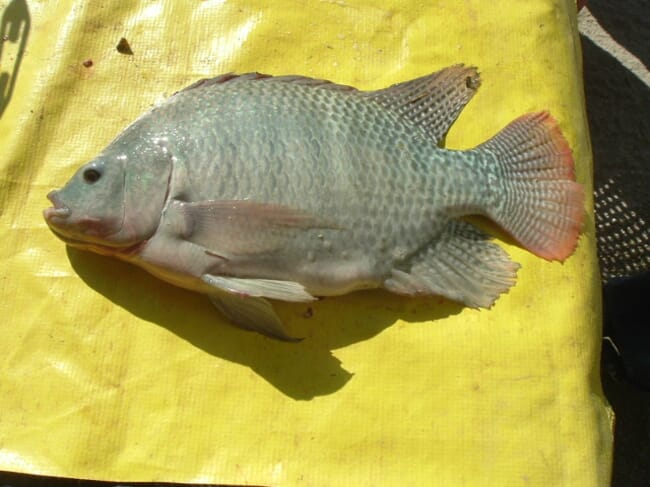
Triploid tilapia capable of growing to adulthood have been produced many times using temperature and pressure shocks, but tetraploid individuals have not
In the mid-1980s the induction of tetraploidy via pressure and cold shocks was reported in Mozambique tilapia, Nile tilapia and their hybrids. However, none of the tetraploid larvae survived after the first week. Tetraploids were characterised by a number of developmental abnormalities, and blood vessels around the yolk sacs appeared absent or empty. A number of other researchers have reported induction of tetraploidy in tilapia, but reports of viable juveniles or adults are lacking.
A plausible explanation for these disappointing results was presented by a group of researchers from Germany in 2004. It has to do with the physiology of polyploid fish – their erythrocytes (red blood cells) are significantly larger than those of normal fish, due to the presence of more genetic material in the nuclei. In the case of tilapia, this seems to result in a fundamental incompatibility in developing larvae: their blood cells are significantly larger than normal, but their blood vessels… not so much. Small blood vessels in these tilapia seem to become clogged with bulky, oversized blood cells, inhibiting flow and eventually resulting in death.
Perhaps similar phenomena can explain results in other studies where early screening suggested the induction of tetraploidy, but few or no offspring survived. While research trials that don’t work out often remain unpublished, there is no shortage of anecdotal accounts of failed attempts to produce tetraploids in a number of aquatic species. Which further emphasises the need for continued research on other methods of producing sterile stocks for aquaculture.


